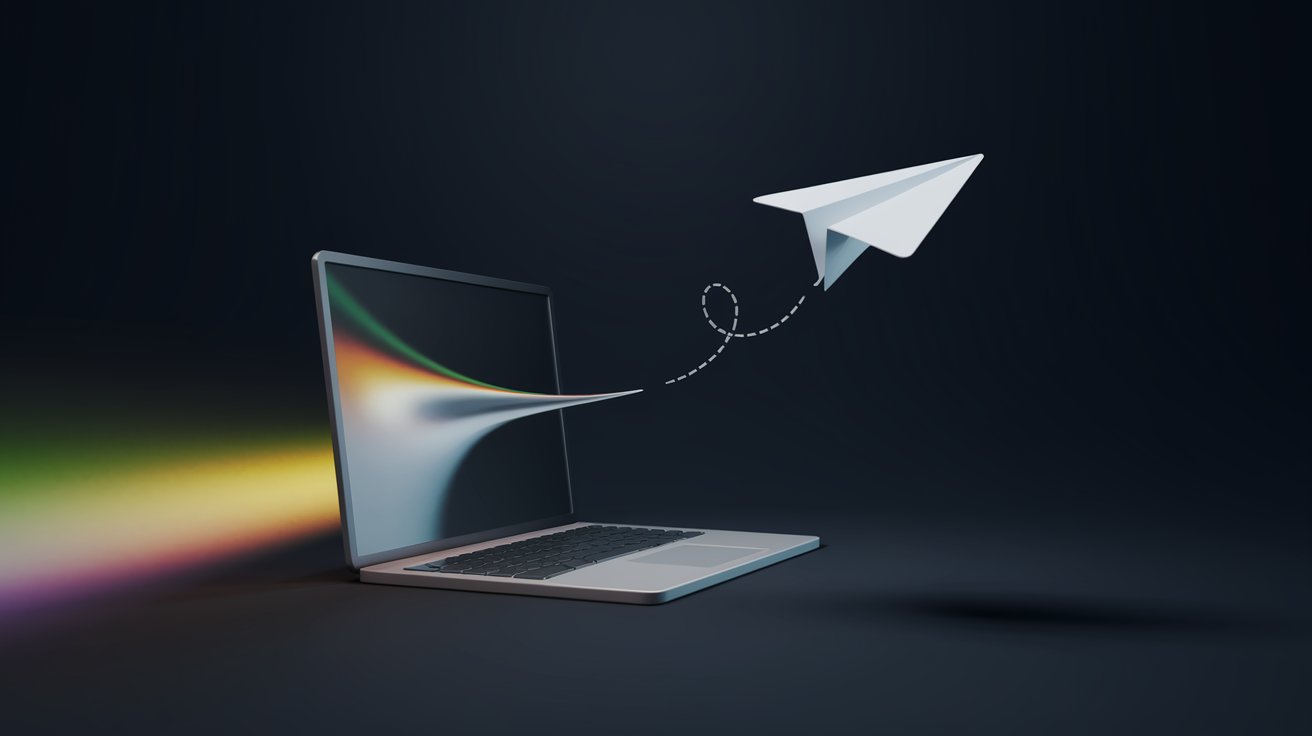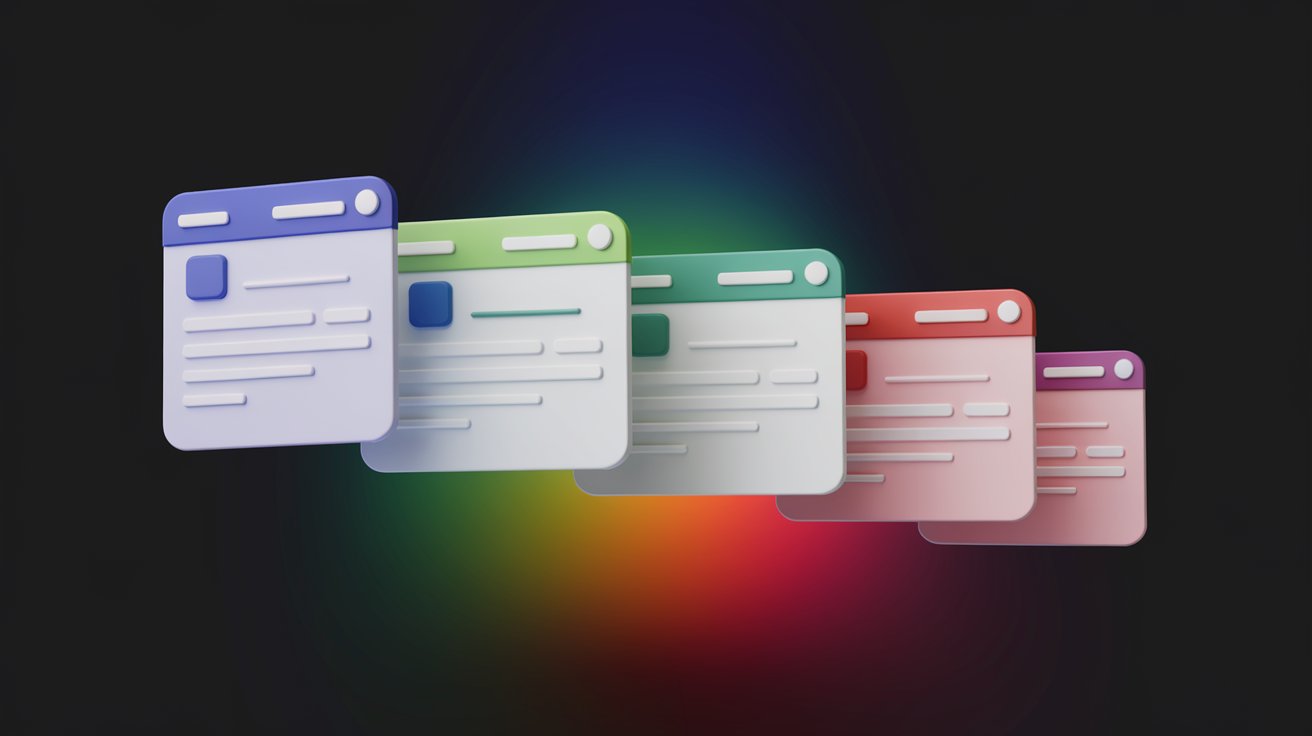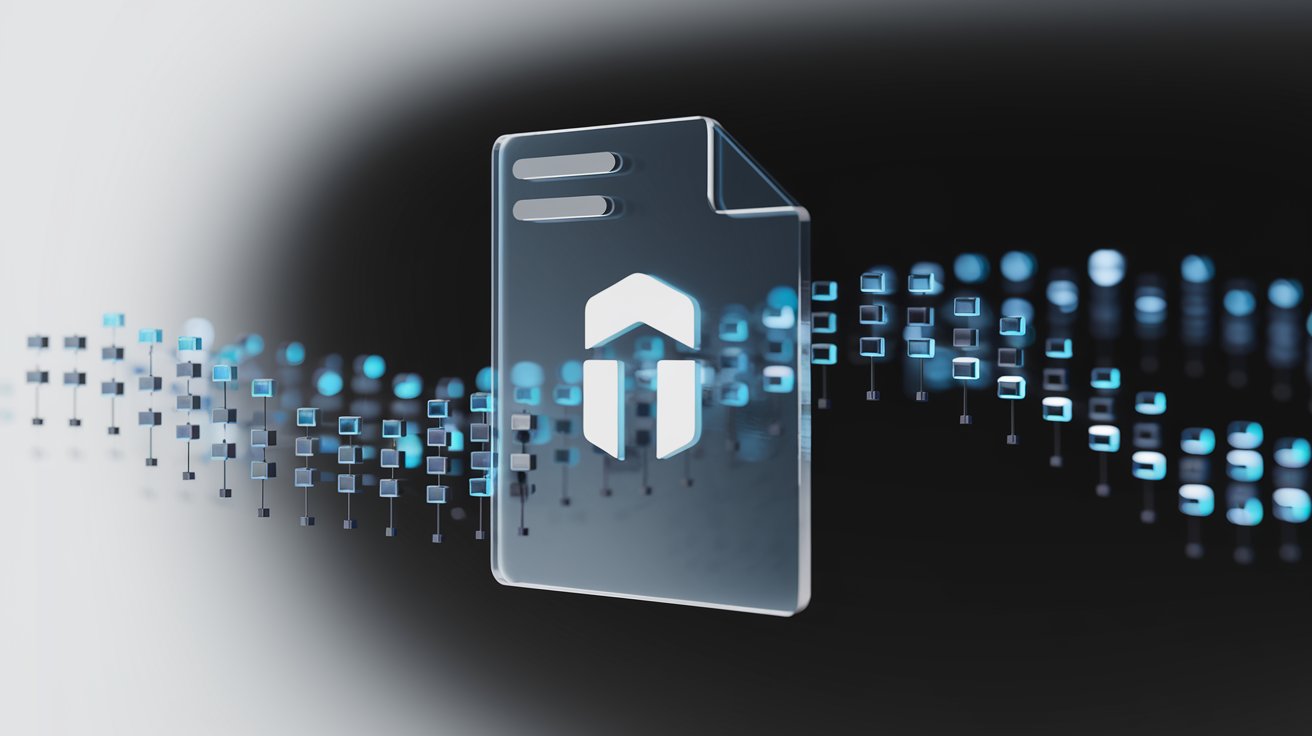In fact, you use SMTP every day – every message you write or receive relies on it. SMTP is the invisible process that moves your email from your mail app to your recipient’s server. It handles delivery, protects the connection (using TLS/STARTTLS), and signals that you’re a legitimate sender (using SPF, DKIM, DMARC).
Now let’s dive deeper. This guide will explain how SMTP works step by step, where it most often breaks (and how to fix it), which ports to use, and the exact checks that boost deliverability and security.
Let’s start with the basics.
What Is SMTP (Simple Mail Transfer Protocol)?
SMTP meaning
SMTP is short for 'Simple Mail Transfer Protocol'. It’s a set of rules for pushing an email from a sender to a recipient.
In tech words: The Simple Mail Transfer Protocol is the technical standard that governs the transmission of email across IP-based networks. It provides a set of rules that allow different computer systems to securely and reliably exchange data. SMTP's role ends once the message arrives at the recipient's mail server.
Without SMTP, your email app is just a text editor. It has no way to send your message to the outside world.
Where SMTP sits in the email stack
When you send an email, a chain of events happens. SMTP powers the first step of your email’s journey.
You (Sender) → [SMTP] → The Internet → [SMTP] → Recipient's Server
That's it. SMTP is the "push" protocol. Its only job is to get your mail from your server to their server.
How SMTP Works
Key components and agents
The process of sending an email relies on a chain of software agents:
- MUA (Mail User Agent): This is your email client (Atomic Mail, Gmail, Outlook, etc.).
- MSA (Mail Submission Agent): It's the first server that receives your email from the MUA. Its job is to check your credentials (authenticate you) to make sure you're allowed to send mail.
- MTA (Mail Transfer Agent): It’s a dedicated SMTP server that relays mail (also known as a mail server or mail relay). It looks at the recipient's domain (@theirdomain.com) and figures out which server in the world is responsible for receiving that mail. It then makes an SMTP connection to that MTA and transfers the letter.
- MDA (Mail Delivery Agent): The final component that receives the email from the last MTA, looks at the local address (recipient@), and drops the letter into the recipient's inbox.
The SMTP transaction
At its core, SMTP is a "conversation" between a client and a server that follows a specific set of commands.
Here’s how it works:
- Composition: A user writes a message in their email app (MUA) and clicks "Send." The MUA connects to its configured outgoing mail server (the MSA).
- Connection: Your client establishes a TCP connection to the server.
- Greeting: The client and server exchange text-based commands.
- The client sends EHLO (modern) or HELO (legacy) to introduce itself and learn the server's capabilities.
- The client issues MAIL FROM:<sender@example.com> to specify the sender.
- The client issues one or more RCPT TO:<recipient@example.com> commands for each recipient.
- Securing (optional but recommended – more on this below): If STARTTLS is offered, the connection upgrades to TLS so the SMTP session is encrypted.
- Data transfer:
- The client sends the DATA command to signal it's ready to transmit the email content.
- The client sends the entire message
- Connection termination: Once the server acknowledges receipt, the client sends the QUIT command, and the server closes the connection.
Email Protocol Triad (SMTP, POP3, and IMAP): Key Differences
Quick mental model. Email has two motions: we push messages out, and later readers pull them down.
- PUSH: SMTP is the only push protocol. It pushes mail from a sender to a server.
- PULL: IMAP and POP3 are pull protocols. They let your app pull mail from your server to your device.
Remember that, and a lot of confusing terminology becomes much clearer.
SMTP vs IMAP vs POP3
- SMTP is for sending mail. It moves your message across the network – handoff, routing, queuing, retries.
- IMAP (Internet Message Access Protocol) is for accessing mail. It keeps all your mail and folders (Inbox, Sent, Drafts) on the server and syncs them across all your devices. (If you delete an email on your phone, and it's also deleted on your laptop.)
- POP3 (Post Office Protocol v3) is for retrieving mail. It connects to the server, downloads all new mail to your device, and then deletes it from the server (by default). It’s best for users who access email from a single computer and want a local archive. Its single-device model made it less popular nowadays.
Quick comparison
SMTP Ports
What’s a port? A port is a numbered door on a server that tells the system which service should handle a connection – SMTP uses a few well‑known ones.
Types of SMTP ports
Do I need to set ports manually?
Most end users: No, your email app auto‑configures the right SMTP port when you add an account. However, you may need to change it.
Common reasons to change ports:
- Network blocks: Some corporate/ISP networks block 587/465; switching to 2525 (if available) restores sending.
- Strict security policy: Your org mandates implicit TLS (465) instead of STARTTLS. Swap 587 → 465.
- Legacy devices/clients: Some older email apps/printers only work reliably on 465.
- Debugging connectivity: Moving 587 → 465 (or vice versa) helps solve STARTTLS issues.
Security & Privacy
By default, the SMTP protocol is a digital postcard. It was designed in the 1980s with a "trust everyone" model that is dangerously naive today. Every piece of security we have today is a clever, powerful, and absolutely necessary layer built on top of that fragile foundation.
Privacy and security in SMTP are not automatic. They must be enforced.
Where encryption happens
This is crucial for privacy and security. By default, the entire SMTP conversation happens in plain text. A hacker sitting in the middle (a classic man‑in‑the‑middle attack) could read your MAIL FROM, RCPT TO, and the entire DATA of your email (full body).
This is fundamentally unacceptable.
1) Transport‑layer encryption (TLS)
- What it is: This is what that STARTTLS command was in our example above. It tells the receiving SMTP server: "Let's stop talking in plain text and build a secure, private tunnel." Both servers then use TLS – the same "S" in https that puts the padlock icon in your browser – to encrypt the entire connection.
- What it protects: The email's journey between servers. A hacker on the network can't snoop on it.
- What it doesn't protect: The email itself. When the message arrives at the destination server (e.g., Google or Microsoft), that server ‘opens’ it and takes out the plain text. It can then scan, read, and analyse this text (as well as hackers who could potentially hack their servers).
2) End‑to‑end (content‑layer) encryption
- What it is: This is true privacy. Your email client (like Atomic Mail) uses your unique key to encrypt the message content on your device. The message is turned into ciphertext before SMTP ever sends it. The SMTP path only carries this scrambled, useless for anyone data. Only intended recipients can open and read it – your server, your recipient's server, and any snoopers in between see nothing.
- What it protects: The body of your email and its attachments.
- What it doesn't protect: E2EE does not hide the email's metadata. The SMTP servers (and anyone snooping) can still see this information:
- Your email address
- Your recipient’s address
- The Subject line of your email
- The time it was sent and the servers it passed through
Preventing spoofing & phishing
This is the "why" for the next section.
Spoofing is when a spammer sends an email pretending to be you. Phishing is using that fake email to trick a recipient into clicking a malicious link.
How to stop this? By authenticating every single sender.
Authenticating the sender
This is the digital passport for your email. Receiving servers (like Gmail) demand it.
- SPF (Sender Policy Framework): A public DNS record listing all the IP addresses (servers) that are authorized to send email for your domain. If the server's IP isn't on the list, it's rejected.
- DKIM (DomainKeys Identified Mail): Your sending server "signs" the email with a private key. The recipient's server verifies that signature with your public key (in DNS). It proves the sender is legitimate and the letter's contents have not been altered.
- DMARC (Domain-based Message Authentication, Reporting & Conformance): It’s the "enforcer" policy for your email. It tells receiving servers (like Gmail) to check both your SPF (authorized servers) and DKIM (digital seal) records. If an email claiming to be from you fails those checks, DMARC gives them your direct order: "Send it to spam or reject it completely." This single policy effectively stops spoofing and provides reports on who is trying to fake your domain.
Best Practices Checklist
Here is a simple checklist for a secure and deliverable SMTP setup.
- Use the right port: Always use Port 587 (with STARTTLS) as your first choice. Use Port 465 (SSL/TLS) as your backup. Never use Port 25 for email submission.
- Authenticate everything: Set up SPF, DKIM, and DMARC for your domain. This is not optional in 2025. It's the only way to prove your identity and prevent spoofing.
- Encrypt your email: Choose an encrypted email provider that uses TLS encryption by default and offers end‑to‑end encryption options to protect the actual content of your messages, not just the connection.
- Mind content hygiene: Clear subject lines, consistent links (no mismatches), avoid URL shorteners, limit spammy keywords.
- Control rate & size: Respect provider limits; keep messages <20–25 MB; compress images; link large files.
- Warm up your IP: If you're a business using a new dedicated IP for your SMTP server, you must warm it up. Start by sending a few dozen emails a day and gradually increase the volume over several weeks. A "cold" IP that suddenly sends 10,000 emails is the #1 definition of a spammer.
- Don't be a spammer: Don't send unsolicited mail. Use double-opt-in for marketing lists. Provide a clear, one-click unsubscribe link.
Stop Worrying About Security. Choose Atomic Mail.
Atomic Mail is a secure email service built for privacy from the ground up. SMTP delivery with TLS by default, plus multiple encryption options so you can send end‑to‑end encrypted messages to any email provider – no setup for you or your recipients.
Why switch to Atomic Mail
- End‑to‑end encryption for everyone: Send truly private messages to any email address – no setup required.
- Zero‑access architecture: Your content is encrypted before it leaves your device; even we can’t access your encrypted messages.
- Private sign‑up: Minimal data required – no phone number or additional email needed.
- Seed‑phrase backup: Secure account recovery without exposing your mailbox.
- GDPR‑compliant: Data protection practices aligned with European standards.
- Secure account management: Two-Factor Authentication (2FA) and active session management give you full control over all logged-in devices.
✳️ Get started in seconds. Create your account and send your first secure, private email today.
FAQ
What is an SMTP server?
An SMTP server is the system that speaks the Simple Mail Transfer Protocol to accept, route, and deliver outbound email. It authenticates senders (submission), relays mail between servers (transfer), queues retries, and returns error codes when something goes wrong.
Is SMTP still safe in 2025?
Only if it's secured. Basic, default SMTP from the 1980s is not safe. Modern, secure SMTP is safe only when layered with mandatory encryption (like STARTTLS or SSL/TLS) and robust authentication (SPF, DKIM, and DMARC). This is why choosing a secure-by-default provider is critical. For sensitive content, it is necessary to add end-to-end encryption.
What is the difference between SMTP and IMAP?
SMTP sends mail (push). IMAP reads and syncs mail across devices (pull). You compose via SMTP; you browse your inbox via IMAP.
Which SMTP port should I use?
Use 587 + STARTTLS by default. If your policy requires encryption from the first byte or STARTTLS is unreliable, use 465 (implicit TLS). If your network blocks 587/465 and your provider offers it, 2525 can be a fallback. Never use 25 for sending mail from your app. It's unencrypted and blocked by most ISPs.
Do I need SPF, DKIM, and DMARC – all three?
100% yes. SPF authorizes your sending hosts, DKIM cryptographically signs messages, and DMARC ties them to your visible From: domain and instructs receivers what to do on failure. Together they prevent spoofing and improve deliverability.
Why is my email going to spam?
Common reasons: missing/failed SPF, DKIM, or DMARC; sudden volume spikes; poor list hygiene (bounces/complaints); spammy content or link mismatches; weak sending reputation; or incorrect ports/TLS. Fix DNS auth, warm gradually, clean lists, and send from a stable domain/identity.
Can I use SMTP for marketing and transactional mail together?
You can, but you should not. Marketing mail (newsletters) gets higher spam complaints and unsubscribes, which will damage your server's reputation. If you send your critical transactional mail (password resets, receipts) on that same SMTP server, they will start going to spam, too.
Separate streams (and often subdomains). E.g., notify.example.com for transactional, news.example.com for marketing. This separates the reputation aspect, making throttling, analytics and troubleshooting easier.
What’s the difference between SMTP TLS and end‑to‑end encryption?
TLS (via STARTTLS/implicit TLS) encrypts the connection between servers. End‑to‑end encryption encrypts the message content before sending, so only recipients can decrypt it. Best practice: use both.
How does Atomic Mail handle SMTP with end‑to‑end encryption?
With Atomic Mail, you can send fully encrypted messages via SMTP. Between Atomic Mail users, messages are encrypted end‑to‑end on your device and delivered as ciphertext; decryption happens automatically in the recipient’s inbox. For password‑encrypted emails to external recipients (e.g., Gmail/Outlook), the SMTP email contains a unique decryption link instead of the message content, so other providers or anyone else except you and your recipient can’t access your email.



